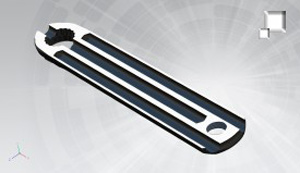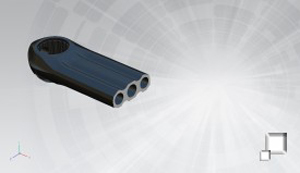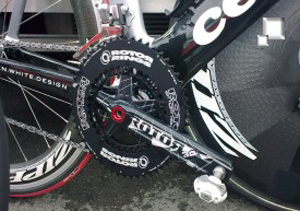 |
 |
The latest product from innovative Spanish component manufacturer Rotor is the 3D Crank crankset, which is being used by
Cervélo TestTeam riders in the Giro d’Italia. The crank design, which uses a precision machining process to create a semi-hollow crank, has been developed in collaboration with the professional racing team.
“The 3D cranks are the first cranks to have been designed with the input of a pro cycling team together with our ROTOR engineers,” said Ignacio Estellés, President ROTOR Bike Components. ”Drawing on a wealth of technical experience, this innovative product was developed collaboratively with Cervélo’s engineers, TestTeam riders and the TestTeam’s mechanic staff.”
“We have a four step protocol for product development with the TestTeam,” explained Damon Rinard, Cervélo TestTeam Race Engineer. “A partner, in this case ROTOR, develops and tests the proposed new product. We then review it and check the in-house data, testing it in different riding situations. Then the Cervélo TestTeam mechanics install it and the riders try it in training; both provide us with their feedback. Once it’s been approved at these three levels, the product is then available for the fourth level: use in races.”
The 3D Crank is designed to be extremely stiff to meet the high demands of Thor Hushovd and the TestTeam’s sprinters, yet lightweight enough to satisfy the needs of Carlos Sastre and the climbers on the team.
 |
 |
Utilizing a special manufacturing process, named “Trinity Drilling System,” an extruded aluminum bar is CNC-machined with three drilled holes running the length of the crank. The technique enables ROTOR’s engineers to remove most of the excess aluminum in the core while still maintaining the structural strength of the crank and without having to resort to expensive forging techniques. ROTOR considers this a significant improvement over the Hollowminum technology developed for their Agilis Evo crankset.
The 3D Cranks are finished with laser graphics. A special limited edition version of the product, with pink stripes along the crank (in a nod to the Giro) has been created for Carlos Sastre, with a special symbol that Sastre contributed etched with his name.





